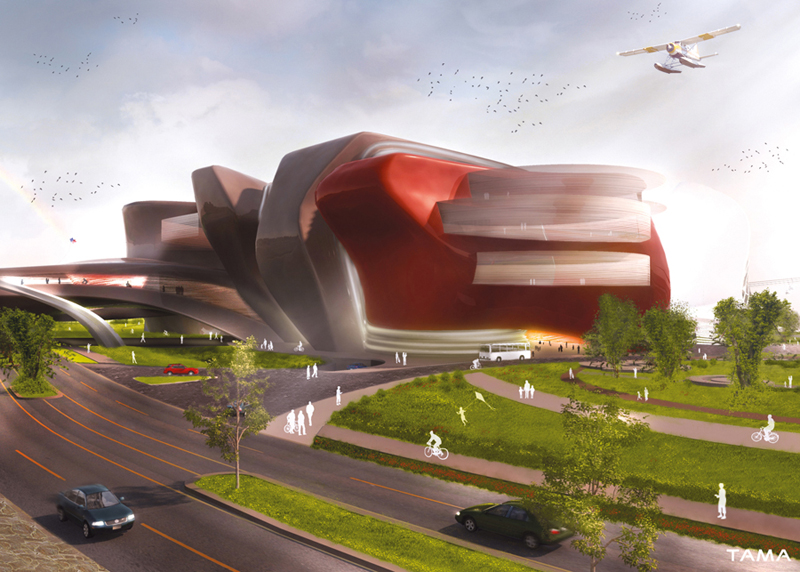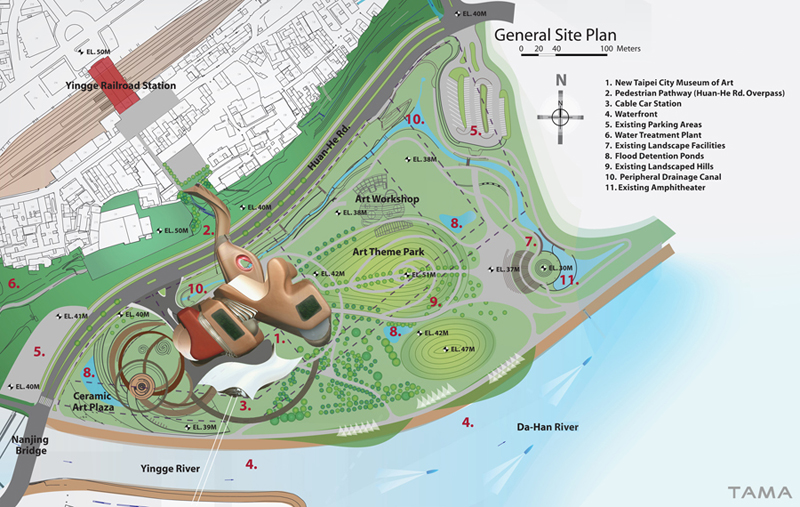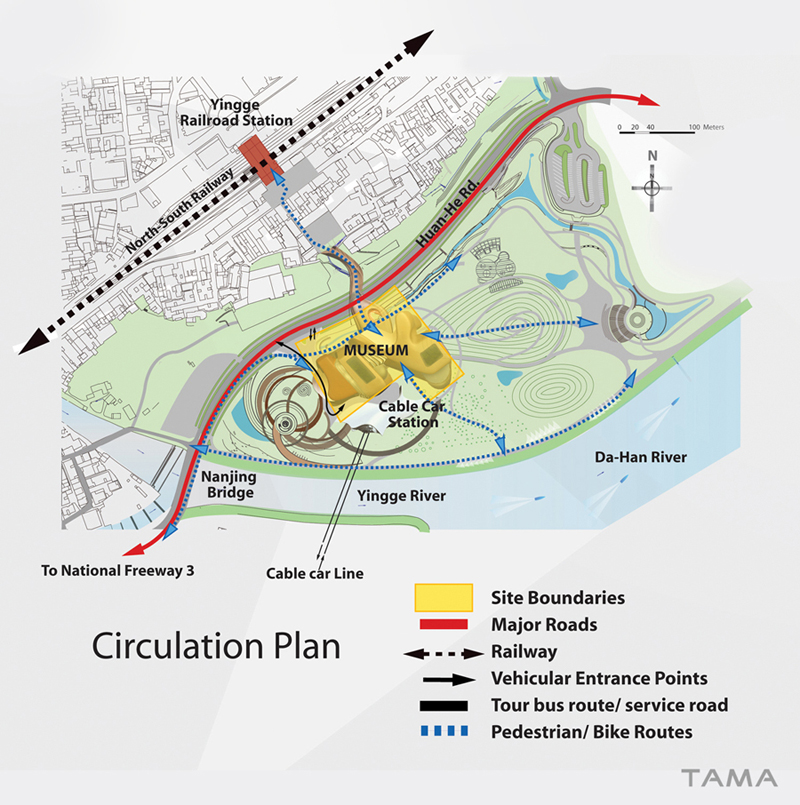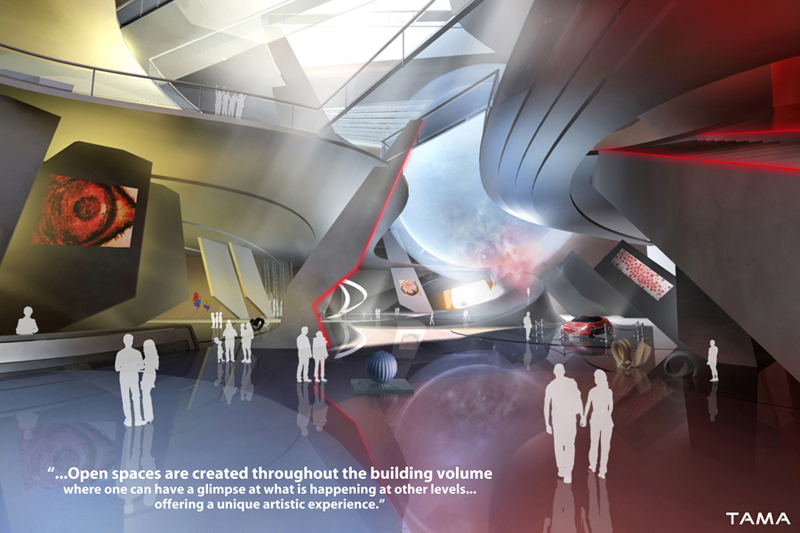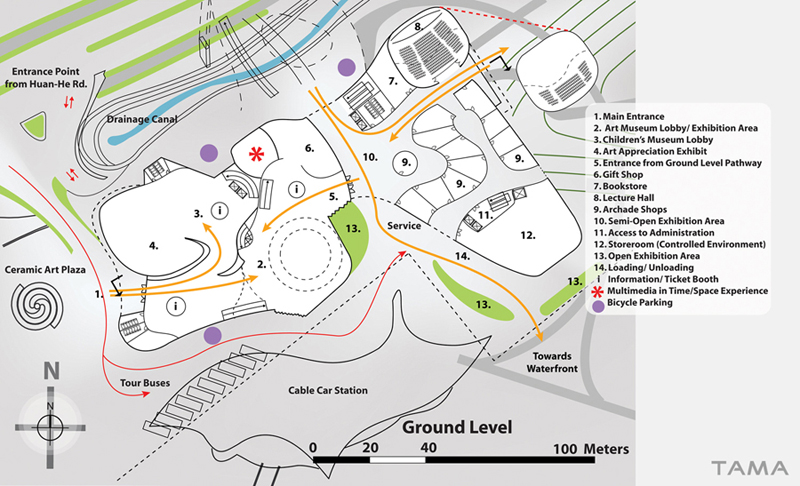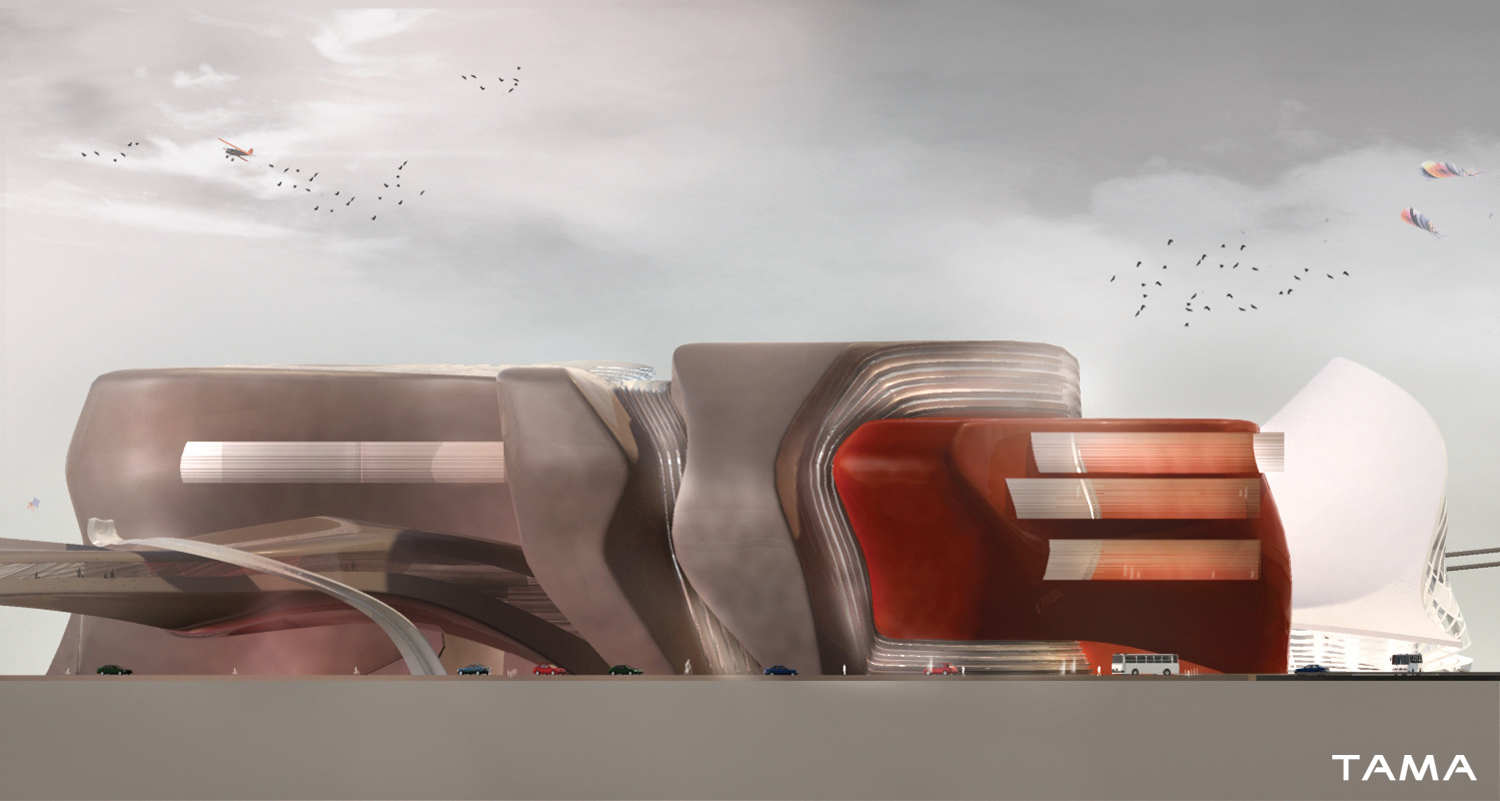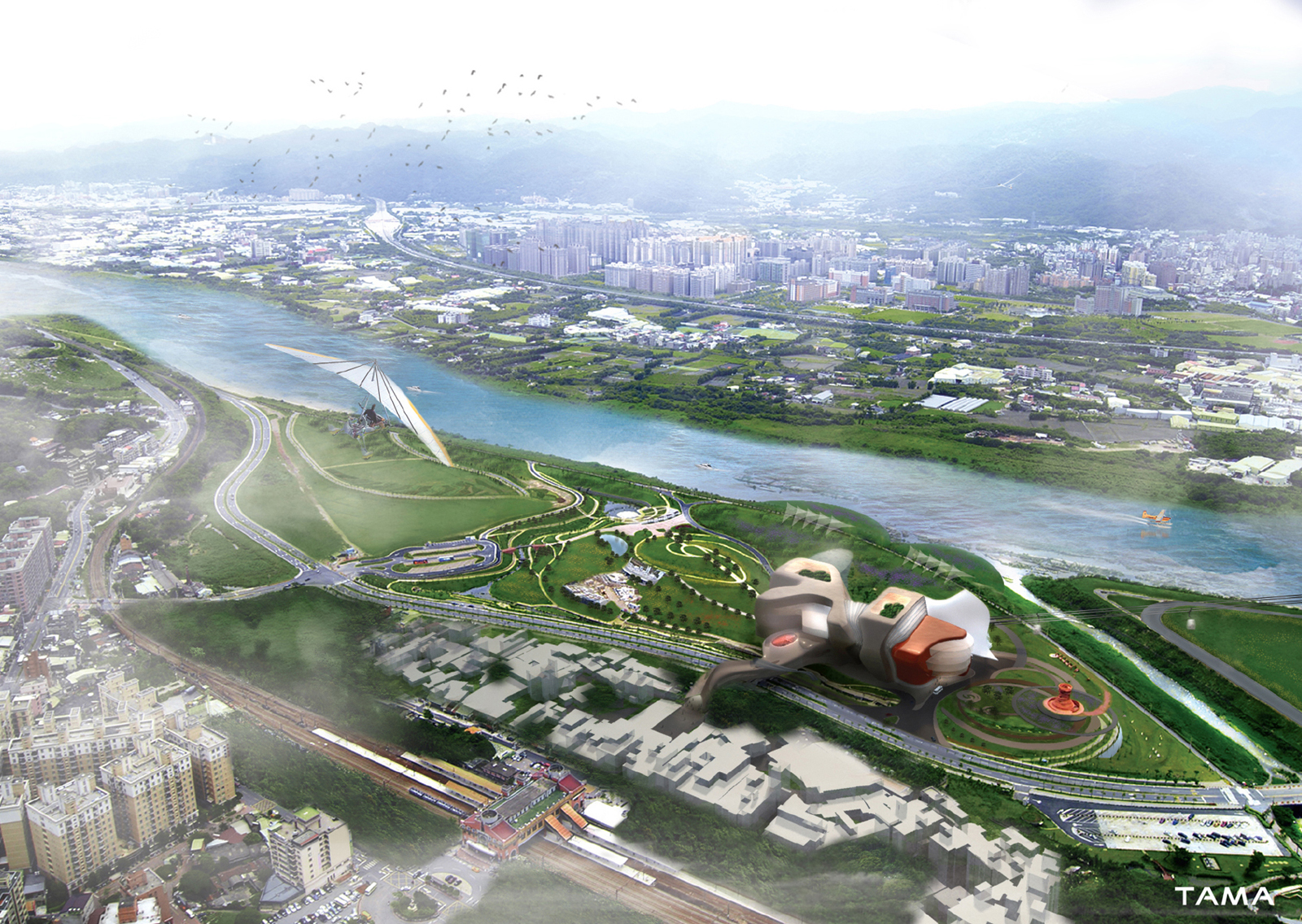New Taipei City Museum of Art
a complex with a Museum of Art, a Children’s Museum of Art and a Cable Car Terminal in an area known for its pottery industry
Yingge District, New Taipei City, Taiwan
2011
The New Taipei City Museum of Art is the first building to be built on a large reclaimed floodplain area in a neighborhood where pottery was the staple industry. And so the story goes something like this:“…In the beginning was the potter who for generations toiled in his labor of love. The floodplain dried out and so the potter set foot on this reclaimed land hesitantly, timidly at first, at the very tip of the corner of the lot, but he had a grand vision, commensurate with the size of the site. And he created a huge pottery wheel. And, lest anybody doubted his intentions, he created large ceramic pottery artifacts, plates, saucers, spoons, which he scattered on the lot around the wheel. And then, having casted his invitation to a creative challenge, he waited to see who would follow…”
It is the same potter’s wheel that is being used to create the new building, composed of glazed clay forms intertwined to form a modern-day temple of art, setting the stage for the remaining structures to be built on the site. The New Taipei City Museum of Art is conceived to emerge from the landscape of the riverfront as a new landform the way a potter creates an artifact by molding clay with his hands.
The interior consists of clear routes which take the visitor to spaces that change shape, height and volume, with points of reference the vertical connections of elevators and staircases. The Children’s Museum has smaller spaces, including lofts within the taller floors, while the Art Museum has larger, fluid spaces. The entire ground floor is hollowed out to form a semi-open, covered space for a strolling experience. The Hall of Fame is encapsulated in a sphere accessible from the lobby and extending to the second level, freely floating in space, symbolizing the perfection that the world of art aspires to. The arcade stores are on the ground level and first level directly across from the Pedestrian Pathway, and form a small, artistic maze where the visitor can discover art. The Pedestrian Pathway that brings the visitors from the Yingge Railroad Station directly to the 1st floor is formed as a closed construction with a roof and side glass bays, offering distant views of the Da-Han Valley.
The skin of the buildings will be formed of glazed ceramic cladding with a photovoltaic coat, affixed to the structure while leaving a ventilated void to enhance dryness, reducing air conditioning and heating energy consumption.

